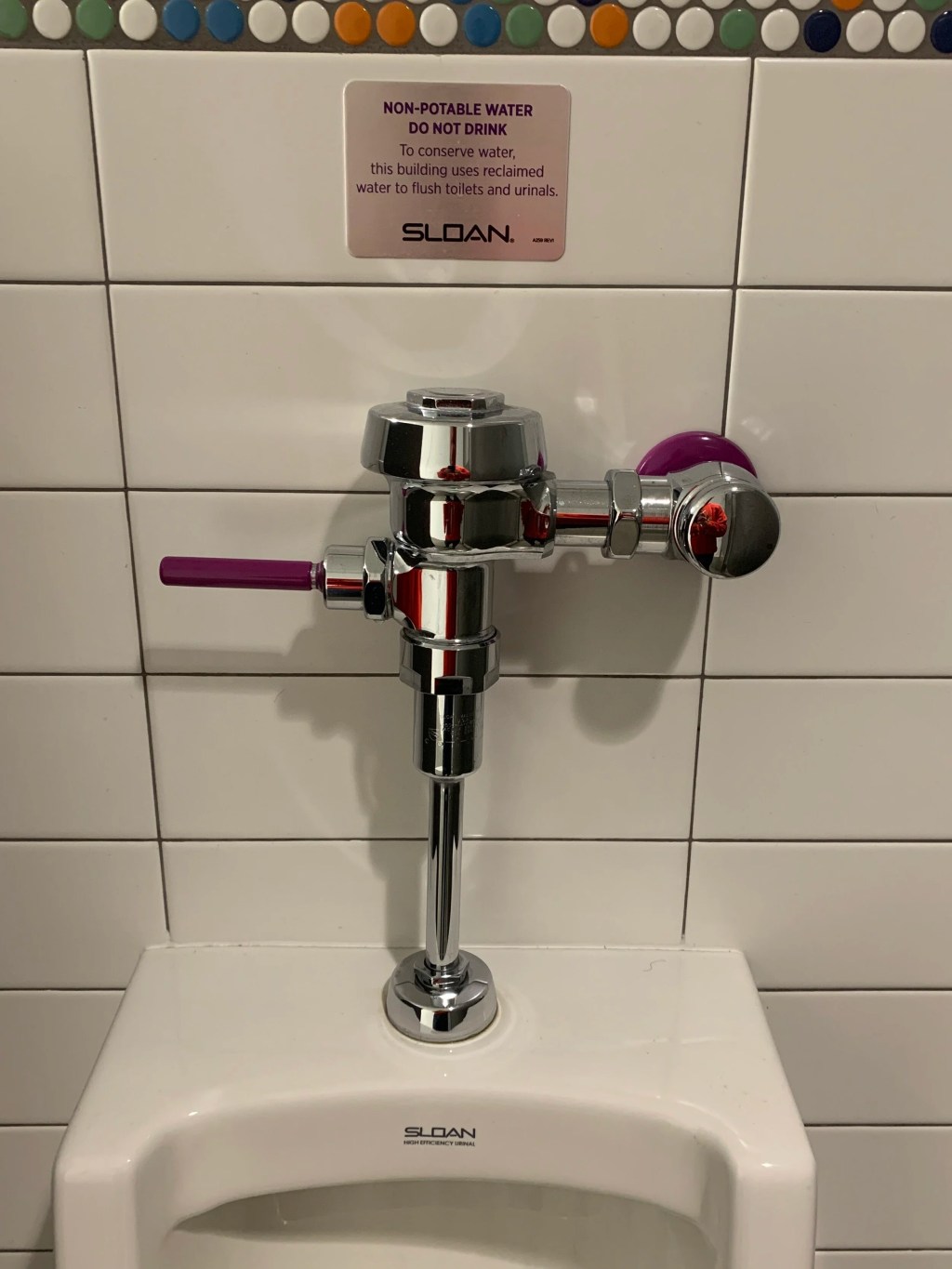While we mostly focus on patent issues here, we start this post with the observation that it seems a bit odd to tell people standing in front of a urinal not to “drink” the water in it. Nevertheless…

Now on to the true topic of today – when applicants use language that fails to sufficiently define the limits of the claims. And sticking with the theme above, the issue is illustrated in a recent PTAB decision revolving around “a typical stream of urine.” (Appeal 2011-008335, Application 11/438,945 – here is a link to the case).
The invention relates to a mat for attenuating reflective spray during use of a urinal. If you have used a urinal, you know how important these little devices can be. The applicant was trying to define their invention for a plurality of upstanding flexible bristles used in the mat. Specifically, the applicant included the following limitation in the claims:
each [bristle] configured to flex when struck by a typical stream of urine, wherein adjacent bristles are separated from one another by a distance such that the typical stream of urine contacting a bristle and causing the bristle to flex will also contact at least two adjacent bristles and cause them to flex as well …
It is understandable why the applicant was using this type of approach to define the claims – it related to a novel aspect of the invention and left the scope relatively broad. Had the specification provided more details as to what constituted a “typical” stream of urine, the applicant might have been in a better position. However, the specification had no such details or other suitable language. Not only are the bounds of the claim language of a “typical” stream of urine difficult to pin down, but it was not clear as to who’s stream was being defined as typical. The PTAB specifically noted that the claim did not identify whether the typical stream was that of a young or old person, as just one example. Likewise, does one consider the beginning of the stream or end of the stream or middle of the stream? The Applicant tried to argue that:
… a typical stream of urine “has long been recognized as a standard for diagnosing lower urinary tract obstructions in males” and has a flow rate of approximately 10-20 ml/sec, is initially about 6 mm across, and breaks up into drops about 10-20 cm after exiting the meatus, and after breaking into drops, the average drop size is about 0.61 cm in diameter with a velocity of about 200 cm/sec. App. Br. 7 (citing MedlinePlus®, Uroflowmetry, http://www.nlm.nih. gov/medlinplus/ency/article/003325.htm, Updated by David C. Dugdale III, MD Sept. 7, 2008, Copyright 1997-2010 (“Medline Paper”); Henry Gray, Anatomy of the Human Body, Section 3b.4 The Male Urethra, 1918, http:www.bartleby.com/107/256.html (“Gray’s Anatomy”); R.C. Ritter, A.M. Sterling, and N. R. Zinner, Physical Information in the External Urinary Stream of the Normal and Obstructed Adult Male, British Journal Of Urology, 49, 293-302, 293 (1977) (“1977 Ritter Article”); and R.C. Ritter, N. R. Zinner, A.M. Sterling, Analysis of Drop Intervals in Jets Modelling [sic] Obstruction of the Urinary Tract, Phys. Med. Biol. vol. 19, No. 2, 161-170 (1974) (“1974 Ritter Article)).
While the applicant likely had to cite some evidence as a way to support their position, a problem was that none of these citations actually defined a “typical” stream of urine. Further, the evidence gave various ranges for the average flow versus beginning/ending values, and further various different ranges for old and young males. These issues, among others, led the PTAB to find the claim unclear.
So, while often there can be a way to claim structural features of an invention in a form that fits with a more general claim scope while still covering the novel concept, one must be careful to ensure that the proper language is utilized. The applicant here had other claims that survived, including claims using different language to define the structure and in the context of a method.
As a quick aside – the examiner rejected method claims as being unclear because the method elements included structure. The Examiner argued that the claims included two statutory classes. This of course is clearly erroneous – there is no problem with adding structural limitations in a method claim in terms of the actions of the method.

Leave a comment